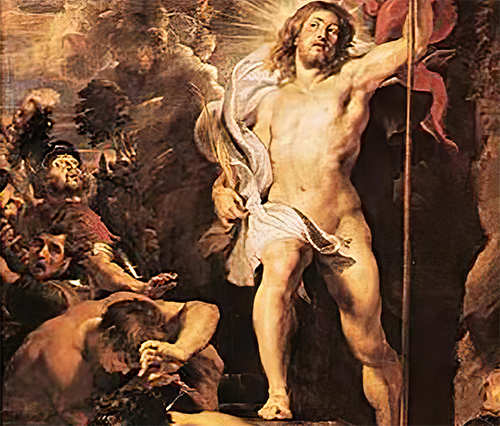
The common Western image of the Resurrection shows Christ as a triumphant yet singular figure.
This figure is surrounded by bright light, is sometimes semi-naked, and dressed in white.
If other humans are present at all, it is often as guards lying asleep by the tomb or in some way falling away from and shielding their eyes from the spectacle.
In Western Christian iconography, Christ is ‘going up’.
An example is a triptych painting of The Resurrection of Christ, which Peter Paul Rubens completed between 1611 and 1612 and is currently housed in the Cathedral of Our Lady in Antwerp.
The iconography of the Eastern (Orthodox) church has Christ ‘going down.’
The familiar Eastern icon of the anastasis shows Christ breaching the gates of hell, generally with two long, broken gates lying in the shape of a cross and a personified Hades or Satan lying conquered under his feet.
The key element in this icon is Christ firmly grasping Adam and Eve’s wrists and pulling them up toward him.
As Jesus is risen, so are those fundamental flaws that hold us bound.
The Resurrection of Jesus is not a singular event, and its sole focus is on the person of Jesus. Instead, it is an ‘us’ event, as we pray:
Dying you destroyed our death,
Rising you restored our life,
Lord Jesus, come in glory.
